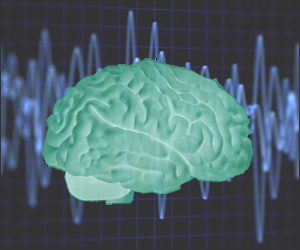Wouldn’t it be cool if we could monitor our body’s chemistry on a particularly good day and then use that data to deal with a particularly bad day in a more positive manner? We can do precisely that using Neurofeedback Therapy.
 Neurofeedback goes by a variety of names, such as Biofeedback, Neurotherapy or Neurobiofeedback. Regardless of the term you use, Neurofeedback measures bodily functions such as heart rate, blood pressure, skin temperature, muscle tension, and perspiration. If you’ve ever weighed yourself or taken your temperature, the information you got back is considered Biofeedback. Brain waves can also be measured using Electroencephalography (EEG).
Neurofeedback goes by a variety of names, such as Biofeedback, Neurotherapy or Neurobiofeedback. Regardless of the term you use, Neurofeedback measures bodily functions such as heart rate, blood pressure, skin temperature, muscle tension, and perspiration. If you’ve ever weighed yourself or taken your temperature, the information you got back is considered Biofeedback. Brain waves can also be measured using Electroencephalography (EEG).
Neurofeedback therapy tracks and measures a person’s physical responses in real-time. With training and practice, this information can reduce stress during crises by controlling the body’s automatic mental and physical reactions. Much like the non-invasive TMS Therapy, it has shown to be helpful in treating a wide range of brain-related conditions for children and adults, including ADHD, depression, anxiety, insomnia, and, most recently, addiction.
Here are 10 Facts About Neurofeedback Therapy:
1. Neurofeedback is used to treat a wide variety of conditions, such as anxiety, drug and alcohol addiction, insomnia, hypertension, muscle tension and chronic migraines to name a few.
2. This therapy is safe and painless.
3. With the help of a neurofeedback technician, a patient’s physical responses are recorded during an evaluation period.
4. Most patients aren’t even aware of the physical and neurological responses their bodies generate on a daily basis until they are given this information.
5. An EEG measures brain waves. Beta waves show wakefulness. Alpha waves reflect relaxed alertness. Theta waves indicate calmness.
6. Addiction can alter normal brainwave patterns. Using neurofeedback techniques, patients can retrain these over time.
7. Neurofeedback has been shown to improve the rate of abstinence for those in recovery from substance abuse.
8. For those in rehab, this therapy has proven to reduce the number of patients that leave treatment against medical advice.
9. After neurofeedback therapy, patients taking the MMPI-2, the most used personality test, showed major improvement in 5 of the 10 scales.
10. Many people report newfound confidence after learning that they can control aspects of their physical reactions to stress.
Substance Abuse Treatment and Neurofeedback Therapy
Many times, a pre-treatment evaluation for substance abuse will show that a person is also suffering from a co-occurring disorder such as depression or anxiety. The best course of action would be to treat both the mental disorder and addiction simultaneously to eliminate the problem’s root cause.
Neurofeedback therapy is a great recovery tool for those suffering from addiction and/or a combined co-occurring disorder. It is a non-invasive technique that teaches patients how to handle their minds and body and interact with the world in a more positive and productive way. It is also incredibly effective when coupled with evidence-based, non-12-step therapies like cognitive behavioral therapy.
Related:
Listen to a podcast about Neurofeedback
Exercise is Great For Your Health, But What Happens If You Stop?
5 Feel-Good Chemicals Everyone’s Brain Produces





